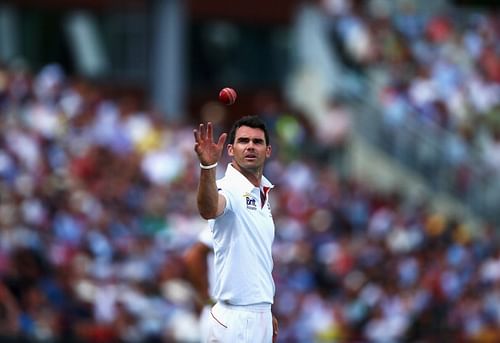
Is the current English bowling attack best in the world?

The current English bowling attack is methodical and efficient. But flexible? Probably not
Bowlers win Test matches. Teams with better bowling attacks tend to win more matches. Even in the face of adversity, good attacks always manage to find a way to dismiss batsmen. They always have someone who rises to the occasion, and out of nowhere, things start to happen.
Much like Stuart Broad made it happen for England in the fourth Ashes Test at Chester-le-Street. Australia, after a century opening stand, looked well on their way to overhaul the target of 299 before England sealed the deal in an extended final session that saw the tourists lose 9 wickets, with Broad leading the way with six wickets during the course of an incisive spell.
The English batsmen, apart from Ian Bell, have been well below their best in the ongoing Ashes series and yet the hosts, on the back of some brilliant efforts by their bowling unit, find themselves 3-0 up.
Apart from Broad, England have found heroes in the spearhead James Anderson who produced an inspired effort to eke out a narrow win at Trent Bridge and Graeme Swann who, after a sedate start, turned his magic on to pick up five wicket hauls at Lord’s and Old Trafford.
So is the current English attack the best in the world?
Their current opponents, Australia have produced a slew of fast bowlers in recent times, but they have struggled to make a mark due to lack of fitness and consistency.
Mitchell Starc broke down in the last series against India, James Pattinson followed suit in England, for the first time in his career Ryan Harris has played 3 consecutive Tests without breaking down, an international comeback seems unlikely for the injury prone Pat Cummins and it’s hard to remember when Mitchell Johnson was last ‘in-form’ in international cricket.
Compared to the Aussie unit, the English pace attack is much more settled and varied.

James Anderson – a master of swing
In Anderson, they have a leader who is at the height of his prowess, a master at being able to generate swing – both conventional and reverse. After an indifferent start to his career, Anderson has developed into a complete entity.
His new ball partner is an enigma. During his off days, Broad looks insipid and laboured in his approach. Too often the length is dragged short. But at his best, he is devastating and almost single-handedly wins games for England.
On his day, he suddenly transforms into a world-class performer, bowling consistently at over 90 mph along with prodigious sideways movement. A series-deciding spell against Australia at The Oval in 2009, the demolition job against India at Trent Bridge in 2011 and his recent show at Chester-le-Street testify his match-winning ability.

Stuart Broad is a proven match-winner. On his day, he can turn the match single-handedly
The third seamer, Tim Bresnan, is the workhorse of the attack. One of the better exponents of reverse swing, Bresnan tirelessly wears a batsman down and forces an error by sticking to a tight line.
The only team that can claim to have a higher pedigree in the pace department is South Africa. The trio of Dale Steyn, Vernon Philander and Morne Morkel have shown great consistency over a period of time to take the Proteas to the top slot in the Test rankings. Not only have they won matches for their team on a regular basis, they have demolished the opposition while doing so.
But there’s one factor which tilts the scales heavily in England’s favour.